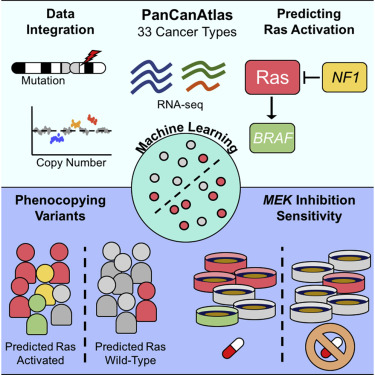Machine Learning Detects Pan-cancer Ras Pathway Activation in The Cancer Genome Atlas

Abstract
Precision oncology uses genomic evidence to match patients with treatment but often fails to identify all patients who may respond. The transcriptome of these “hidden responders” may reveal responsive molecular states. We describe and evaluate a machine-learning approach to classify aberrant pathway activity in tumors, which may aid in hidden responder identification. The algorithm integrates RNA-seq, copy number, and mutations from 33 different cancer types across The Cancer Genome Atlas (TCGA) PanCanAtlas project to predict aberrant molecular states in tumors. Applied to the Ras pathway, the method detects Ras activation across cancer types and identifies phenocopying variants. The model, trained on human tumors, can predict response to MEK inhibitors in wild-type Ras cell lines. We also present data that suggest that multiple hits in the Ras pathway confer increased Ras activity. The transcriptome is underused in precision oncology and, combined with machine learning, can aid in the identification of hidden responders.
Citation
The Cancer Genome Atlas Research Network (incl. N Gehlenborg). “Machine Learning Detects Pan-cancer Ras Pathway Activation in The Cancer Genome Atlas”, Cell Reports 23(1):172-180.e3 (2018). doi:10.1016/j.celrep.2018.03.046